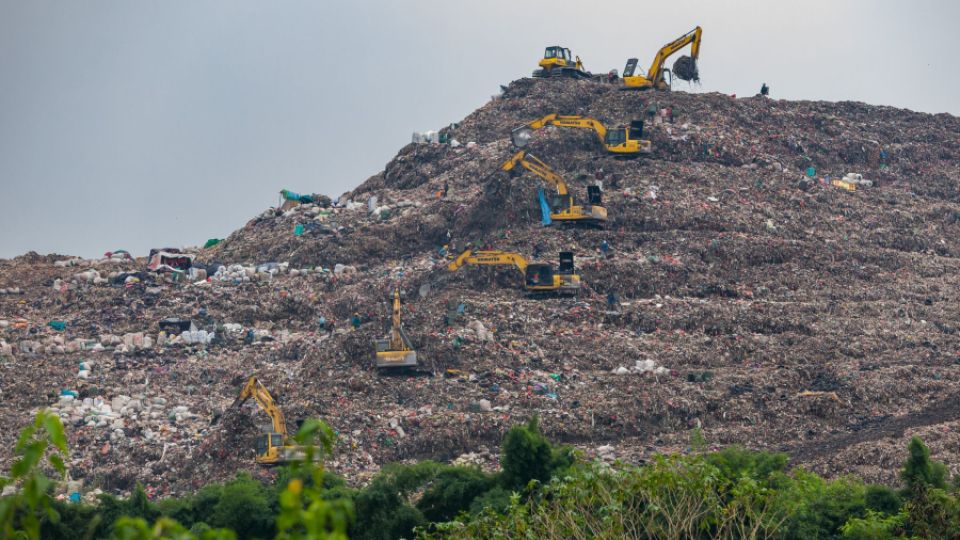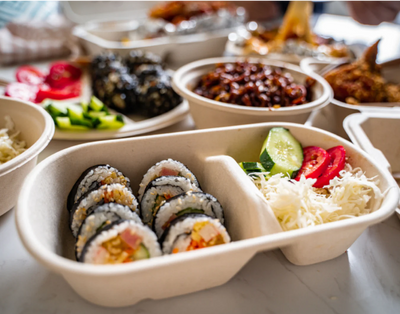Waste is currently a pressing issue for society as a whole, causing environmental pollution and threatening human health. According to information from the World Bank, the annual amount of municipal solid waste (MSW) has increased to 2 billion tons and is projected to reach 3.4 billion tons by 2050. This is a serious warning sign regarding the global waste management issue. Therefore, through this article, EQUO aims to introduce the origin, classification, and methods of recycling waste, with the hope that together we can raise awareness and responsibility for protecting the environment.
1. Origin of waste
Based on its origin, waste is commonly divided into three main groups, including industrial waste, agricultural waste, and human household waste.
- Industrial waste is generated in factories and industrial areas, including types such as metals, plastics, chemicals, etc.
- Agricultural waste originates from farming and livestock activities, including waste from livestock and weeds.
- Household waste is generated by the daily activities of humans, including food waste, packaging, and utensils.
Due to its prevalence and close connection to the daily lives of people, household waste accounts for the largest proportion, about 60% of the total global waste. Therefore, understanding the origin is important so that everyone can effectively classify waste, thereby minimizing the impact of waste on the environment.

2. Classification of Waste
Waste can be classified into 3 main types: organic waste, inorganic waste, and recyclables.
- Organic waste is waste derived from plants and animals, such as leftover food, fish and meat, fruits and vegetables, leaves,…
- Inorganic waste includes non-reusable or non-recyclable items, such as rubber items, broken glass, wood, stone, bricks,…
- Recyclable waste includes products like plastic bottles, cardboard boxes (paper), aluminum can shells, …
Currently, the habit of placing all types of waste in one bag has become common. However, these waste bags often contain a variety of different types of waste, such as leftover food, beverage cans, tin can shells, and glass jars, without undergoing any sorting measures, thereby reducing the recycling potential.
To address this issue, the source separation process is crucial. If people can classify waste at the source rigorously, the subsequent collection and processing process will become quicker and easier. An effective means to implement this process is by using 3-compartment trash bins, similar to what we often see in public areas.

3. Waste Treatment and Recycling Measures
After classification, each type of waste has different treatment measures.
3.1. Organic Waste
- For vegetable and fruit waste: The most common method of organic waste treatment is composting. This process relies on the interaction of microorganisms to decompose organic waste, producing organic fertilizer that can be used for crops. Organic fertilizer not only improves soil quality but also enhances crop productivity.
- For fish and meat waste: Recycling it into fertilizer, as is done with vegetable and fruit waste, becomes challenging due to its nutrient-rich content, and the treatment of this type of waste may generate unpleasant odors. Therefore, it can be utilized as animal feed, and, most importantly, attention should be given to preparing an adequate amount of food to avoid excess waste after each meal.

3.2. Inorganic Waste
For inorganic waste, after classification, there are two treatment forms as follows:
- Incineration: Inorganic waste is incinerated at waste incineration plants.
- Landfill: Inorganic waste is disposed of in landfills, and, naturally, the time required for inorganic waste to decompose in the soil is quite long.
Both of these treatment methods, whether less or more, still have environmental impacts. Therefore, the best way to protect the environment is for individuals to be conscious and generate less inorganic waste.

3.3. Recyclable Waste
- For recyclable waste, you can utilize and transform them into new products.
- If these types of waste cannot be reused, they should be collected, sorted, and processed through material recovery methods

In general, source separation of waste is a crucial step in optimizing the recycling process. When waste is properly classified, it will be collected and processed more efficiently, helping to minimize environmental pollution and conserve natural resources.
It is important to remember that every action, from source separation of waste to supporting recycling, contributes to the common goal of protecting the environment and building a sustainable future. Let's act together to preserve our planet.
Synthesis - Comparison Table of Waste Classification and Treatment
|
Criteria |
Organic Waste |
Inorganic Waste |
Recyclable Waste |
|
Classification |
Leftover food, fish and meat, fruits and vegetables, leaves,… |
Damaged items, glass and ceramic dishes, glassware,… |
Types of cardboard boxes, soda can shells,… |
|
Treatment |
Composting organic waste to produce fertilizer |
Incineration, landfill |
Recycling, material recovery |
You may not know - EQUO straws are Organic Waste

All EQUO straw products are made from 100% natural materials such as rice, grass, sugarcane, coffee grounds, and coconut,... These straws can completely decompose in the environment within 3-6 months, not only protecting the environment but also ensuring consumer safety. They are suitable for all types of beverages. EQUO is proud to provide all these solutions to replace traditional plastic straws, contributing to reducing the amount of inorganic waste, especially plastic straws that may take hundreds of years to decompose.
- Grass straws: Made from natural grass, offering an eco-friendly option.
- Rice straws: Produced from 100% rice and tapioca starch, colored using natural vegetable and fruit juices, and are home-compostable.
- Coffee husk straws: Crafted from coffee grounds, they are 100% plastic-free, home-compostable and have a relaxing aroma of coffee.
- Sugarcane fiber straws: Made from sugarcane fiber,they have a mild, sweet aroma and biodegradable properties that won't alter the taste of your beverage.
- Coconut straws: Manufactured from 100% fermented coconut water, they are highly flexible and do not dissolve in liquid.
For more detailed information on these products, you can visit:


